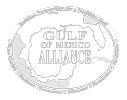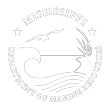Project Title: Sea-level Affecting Marshes Model (SLAMM) Runs and Conservation Planning Data Platform
Funding entity: Gulf of Mexico Alliance
Contact data:
Ryan Fikes
Coordinator of the Habitat Conservation and Restoration (HCRT)Team of GOMA
Gulf of Mexico Foundation
PMB 51, 5403 Everhart
Corpus Christi, Texas 78411
+1 (800) 884-4175 toll free
ryan@gulfmex.org
Rhonda Price
Coordinator of the Coastal Community Resilience (CCRT) Team of GOMA
Mississippi Department of Marine Resources
1141 Bayview Ave.
Biloxi, Mississippi 39532
+1 (800) 374-3449 toll free, +1 (228) 374-5000
rhonda.price@dmr.ms.us
Developed by: The Nature Conservancy
Contact data:
Jorge Brenner, Ph.D. [Project Manager]
Associate Director of Marine Science
The Nature Conservancy, Texas Chapter
205 N. Carrizo St.
Corpus Christi, Texas 78401
+1 (361) 882-3584 ext. 104
jbrenner@tnc.org
Michael Thompson, M.Sc. [Data Manager]
Marine GIS Analyst
The Nature Conservancy, Texas Chapter
205 N. Carrizo St.
Corpus Christi, Texas 78401
+1 (361) 882-3584 ext. 106
michael_thompson@tnc.org
RE: the purpose of this file is to introduce the user to the basic components of this project.
Content:
A) Data platform
B) Online tools
C) Other products and access points
D) Suggested citation
E) Acknowledgements
F) Disclaimer
A) Data platform:
The purpose of the data platform for the Sea-Level Rise Assessment and Conservation Data Platform of the Gulf of Mexico Project is to store and deliver to users all data related to the project in a well-organized format that allows the user to easily access and navigate to data of interest, as well as make the data freely available to public. The data platform consists of a spatial database, a user interface, online tools, and offline components for viewing the data within ESRI ArcGIS software and GeoPDF documents. The online user interface consists of HTML documents, which are essentially webpages that introduces the user to the coastal hazards, models used, project sites, provide descriptions of the models, project sites and samples of results. The online tools for the data platform consists of the SLAMM View and the Gulf of Mexico Restoration and Resilience Decision Support Tool websites that allows the general public to visualize a sampling of the products created by the project. The Gulf of Mexico Restoration and Resilience Decision Support Tool is integrated into the data platform web pages. Total space of products of this project: 30 GB (approx.).
Software needs:
- Internet browsers: Internet Explorer, Mozilla Firefox, Google Chrome, and Safari.
- ESRI ArcGIS 10 to open geodatabases and open ‘map projects’ in *.mxd format
- ESRI ArcGIS Explorer to open geodatabase and/or individual shapefiles and grids (free at: http://www.esri.com/software/arcgis/explorer/download.html). Setup file for installing the program has been included in the main folder.
B) Online tools:
The ‘online component’ of the SLR data platform consists of two online tools:
- http://www.slammview.org/slammview2/
The SLAMM View website was created by Image Matters LLC, with support from the US Fish and Wildlife Service, and consists of a web browser based application that is designed to be used as a tool to assess the impacts of sea-level rise in coastal areas from the results of the SLAMM. The tool hosts SLAMM model results from multiple project sites from across the US, including the results from this project. The tool allows the user to visualize the results within the web browser and then compare two scenarios side by side to assess the changes that are occurring between the two scenario results. The tool also provides the map legend and has the option to perform an analysis that calculates change statistics for all selected scenarios throughout a given model’s time series of scenarios.
- http://gulfmex.coastalresilience.org/
The Gulf of Mexico Restoration and Resilience Decision Support Tool website is run by The Nature Conservancy and offers an online decision support tool, which consists of an online web map for the display of GIS data for the Gulf of Mexico online. Included within the GIS data on the web-map are the products from this project, which include the SLAMM sea-level rise scenarios, storm surge scenarios, and site-level conservation analysis results. The results can be viewed by navigating to the website and then clicking on the “Habitat & Hazards” menu on the top of the screen. Within this dropdown menu, there are currently three categories, where the SLAMM sea-level rise results and conservation analysis results relevant to marshes are stored within the “marsh migration” category. When one scrolls over this category, a list of project sites appears to the right, where currently the products from this project are stored within the “Mississippi, Grand Bay” and “Texas, Galveston Bay” sections. The “Mississippi, Grand Bay” section contains all data relevant to the Grand Bay NERR project, while the “Texas, Galveston Bay” section contains all data for both of the Galveston Bay and Jefferson County project sites. Once a project site has been selected, then a new dropdown menu will appear next to the “Habitats & Hazards” menu titled “Scenarios.” When the scenarios dropdown menu is clicked a list of all of the individual datasets appears and the user must select one to be displayed on the web-map. At the bottom of the scenarios dropdown menu is the properties link, which when opened allows the user to access the metadata files in a new tab for each dataset within the dropdown menu. The metadata files are saved in the .xml file type and are stored in the Federal Geographic Data Committee metadata format.
C) Other products and access points:
Other materials produced by this project include:
- SLR & ADCIRC DVD
A DVD with results from each project site including all SLAMM SLR and ADCIRC storm surge model reports and scenarios in ESRI GIS grid format.
Some of the GIS data products of this project can be accessed through additional web portals:
- gomaportal.org
The GOMA Portal is a metadata catalog and data repository for Gulf of Mexico related geospatial datasets funded by the Gulf of Mexico Alliance [includes: GIS grids of SLAMM and ADCIRC model results]. - http://www.slammview.org/slammview2/mobile.html
The SLAMM View app for Ipod, Ipad and Android phones and tablets [includes: SLAMM scenarios for all project sites].
D) Suggested citation:
Brenner, J., and M. Thompson. 2013. Sea-level Affecting Marshes Model (SLAMM) Runs and Conservation Planning Online Data Platform. A report from The Nature Conservancy to the Gulf of Mexico Alliance. The Nature Conservancy, Corpus Christi, Texas < http://slr.stormsmart.org >
E) Acknowledgements:
The authors would like to acknowledge the support from multiple partners, stakeholders and individuals who provided data, input and feedback to models, comments to reports, and valuable insights for this project.
Funding for this project was provided by the Coastal Community Resilience and Habitat Conservation and Restoration Teams, a part of the Governor’s Gulf of Mexico Alliance. Funding to the Governor’s Gulf Alliance was provided by the National Oceanic and Atmospheric Administration (project NOAA-GOMA-1001) thought the Mississippi Department of Marine Resources and the Gulf of Mexico Foundation.
F) Disclaimer:
The Nature Conservancy (TNC) provides this content “as is” and TNC shall not be held liable for your use of the information provided in the offline data platform or the online web sites. By accessing the content of the data platform, you indicate that you understand and agree to these terms and conditions. The sea-level rise and storm surge model results provided in the data platform constitute potential scenarios of coastal hazards but do not constitute precise values to be used for engineering design and planning purposes. The data platform interface provides links to external, third party websites. By providing links to other sites, TNC does not guarantee, approve or endorse the information or products available at these sites, nor does a link indicate any association with or endorsement by the linked site to TNC. Visitors of external sources of data should direct any concerns regarding any external link to its site administrator or webmaster.





